Modern living rooms in 2025 embrace a sophisticated blend of comfort, sustainability, and personal expression. Contemporary design trends focus on creating spaces that appeal to all senses while maintaining clean, functional aesthetics. From warm minimalism to bold maximalism, today's living rooms feature organic shapes, natural materials, and thoughtful color palettes. These spaces prioritize both style and wellness, incorporating elements like curved furniture, sustainable materials, and biophilic design. Whether you prefer sleek industrial touches or cozy cottage-inspired themes, modern living room concepts offer endless possibilities for creating inviting, stylish spaces that reflect individual personality while embracing current design innovations.

1. Warm Minimalist Living Room with Natural Wood Accents
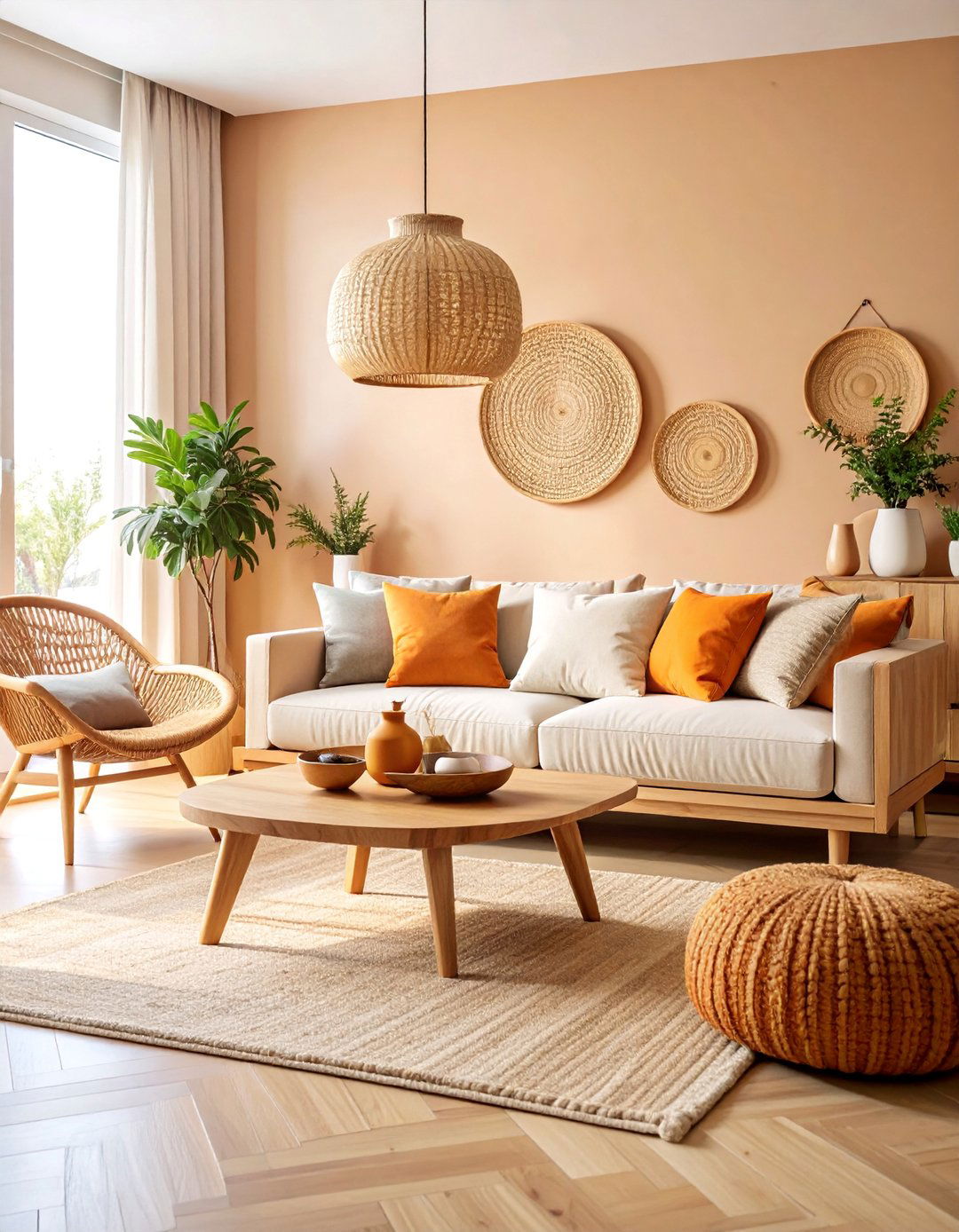
This design philosophy combines the clean simplicity of minimalism with warming natural elements. Feature light oak or blonde wood furniture pieces against neutral beige or cream walls to create visual warmth without clutter. Choose a low-profile sectional sofa in soft linen or cotton fabrics, paired with a live-edge wooden coffee table as the centerpiece. Add texture through woven natural fiber rugs and ceramic accessories in earthy tones. The key lies in selecting fewer, higher-quality pieces that showcase craftsmanship and natural beauty. Incorporate plants in simple ceramic planters to bring life into the space while maintaining the serene, uncluttered aesthetic that defines contemporary minimalist design principles.
2. Maximalist Living Room with Jewel Tone Color Palette
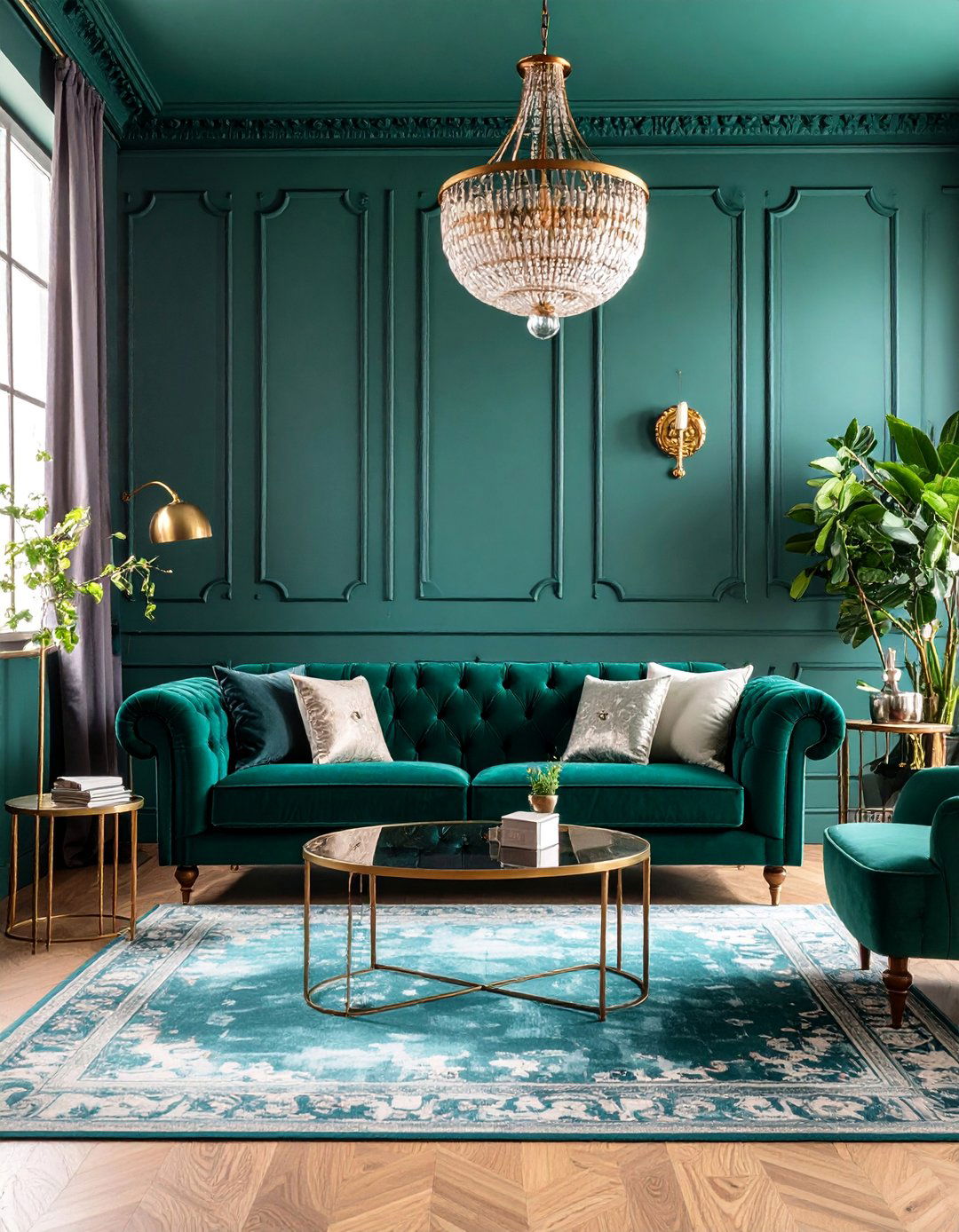
Bold emerald greens, deep amethyst purples, and rich sapphire blues create a luxurious maximalist environment that celebrates abundance and personality. Layer patterned textiles, mix vintage and contemporary furniture pieces, and display collections of art and accessories throughout the space. A velvet sectional in rich burgundy becomes the focal point, surrounded by eclectic side chairs in contrasting jewel tones. Add metallic accents through brass lighting fixtures and copper decorative objects. The walls can feature bold wallpaper with geometric or botanical patterns, while multiple area rugs in complementary colors define different seating areas. This approach creates a curated, gallery-like atmosphere that feels both sophisticated and deeply personal.
3. Curved Furniture Living Room with Organic Modern Design
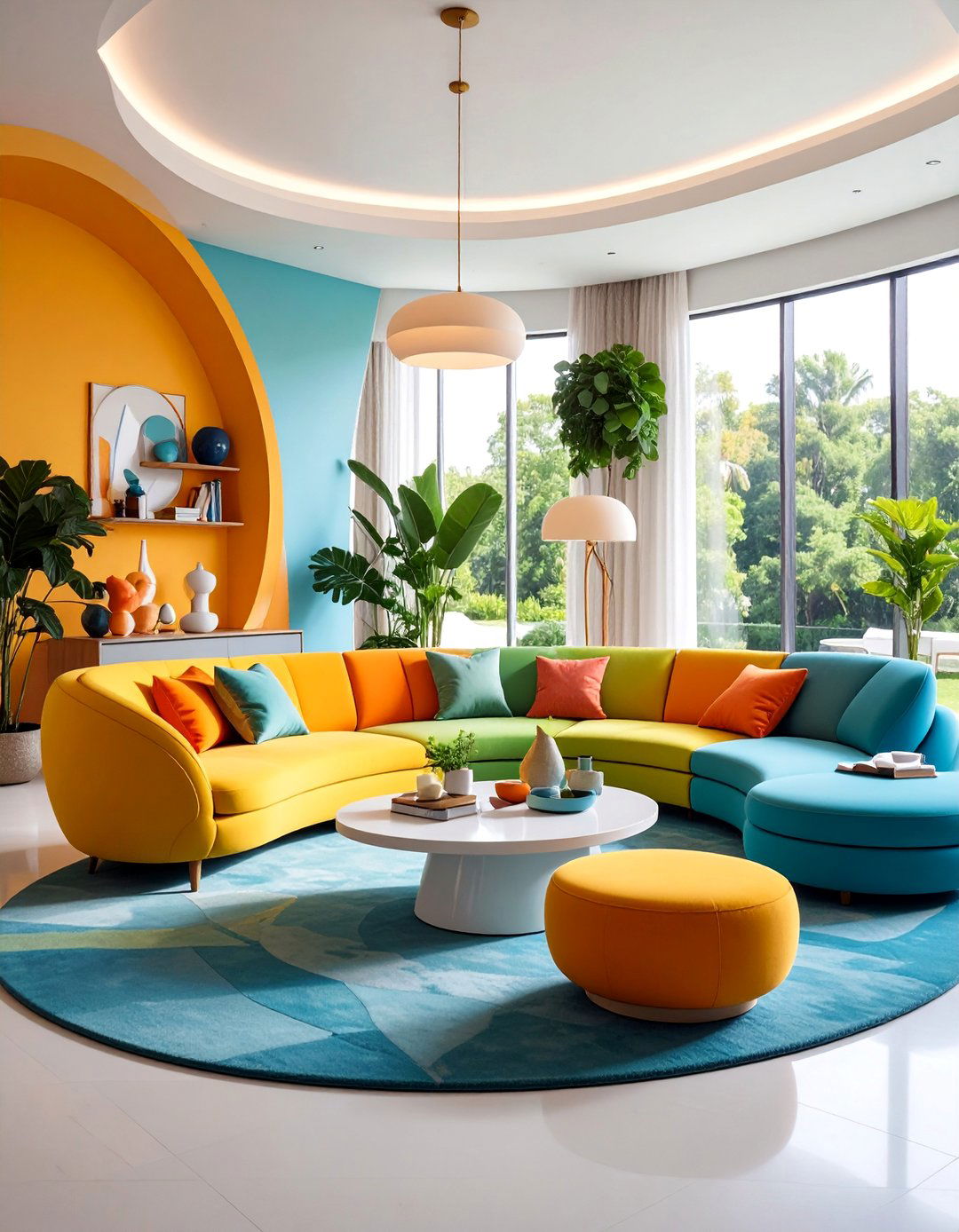
Embrace flowing, organic shapes that soften the hard lines typically found in modern spaces. Select a curved sectional sofa as the room's centerpiece, complemented by rounded coffee tables and organically shaped accent chairs. The furniture should feature gentle curves that create a sense of movement and flow throughout the space. Choose materials like bouclé fabric, smooth leather, and natural wood with visible grain patterns. Add sculptural lighting fixtures with curved elements and accessories with rounded forms. The color palette remains neutral with warm undertones, allowing the unique furniture shapes to take center stage. This design creates a calming, nurturing environment that feels both contemporary and timeless.
4. Industrial Modern Living Room with Mixed Metal Textures
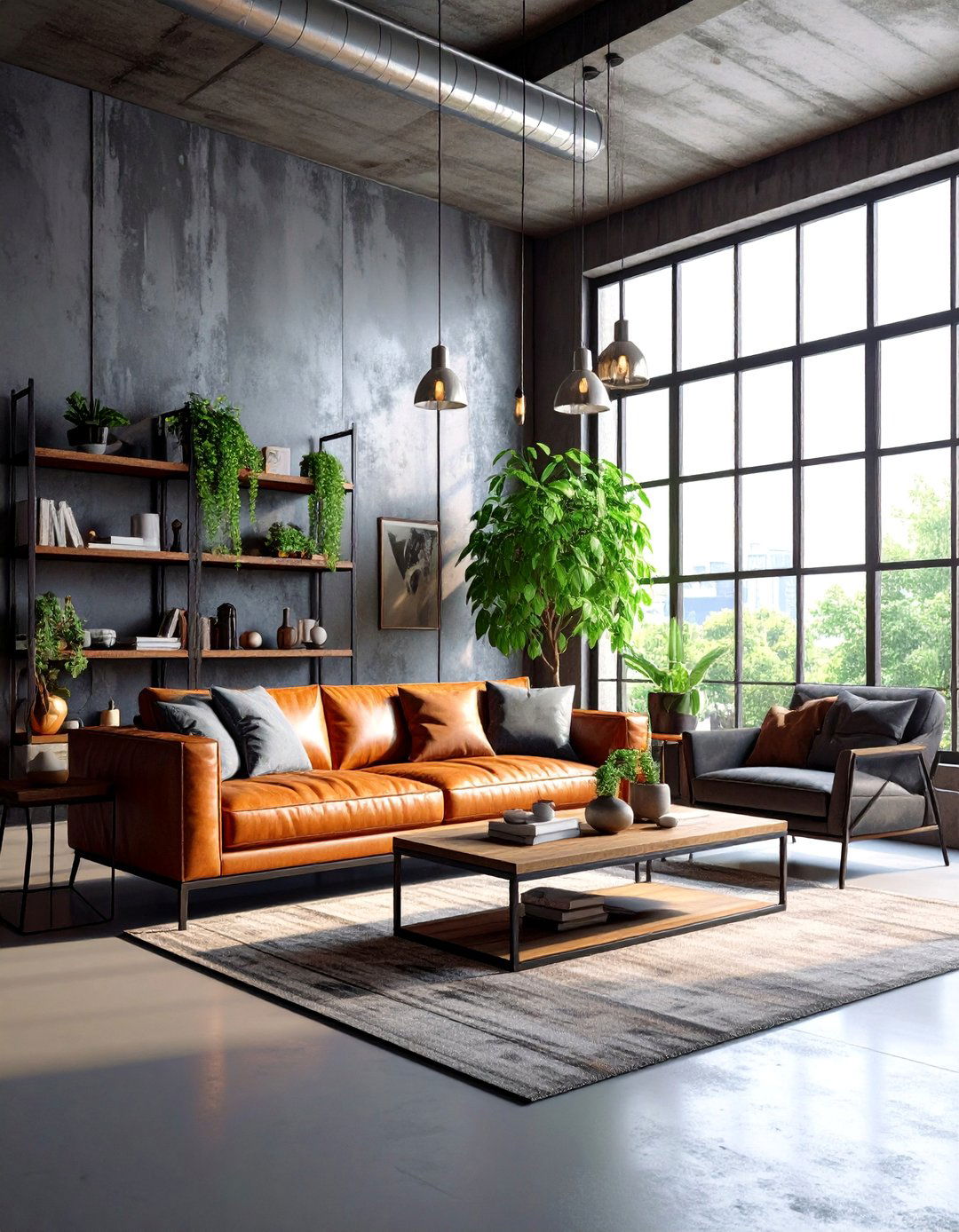
Combine raw industrial elements with refined modern aesthetics through strategic use of different metal finishes and textures. Feature exposed steel beams, black iron light fixtures, and furniture with metal framework alongside softer elements like leather upholstery and wooden accents. Mix brushed brass accessories with matte black fixtures and aged copper details to create visual interest. Choose furniture with clean lines and industrial-inspired silhouettes, such as a leather sofa with a steel frame and glass-top coffee tables with metal bases. Add concrete or stone surfaces for contrast against warmer materials. The color palette centers on neutral grays, blacks, and browns, creating a sophisticated urban atmosphere that balances edginess with comfort.
5. Sustainable Living Room with Reclaimed Materials
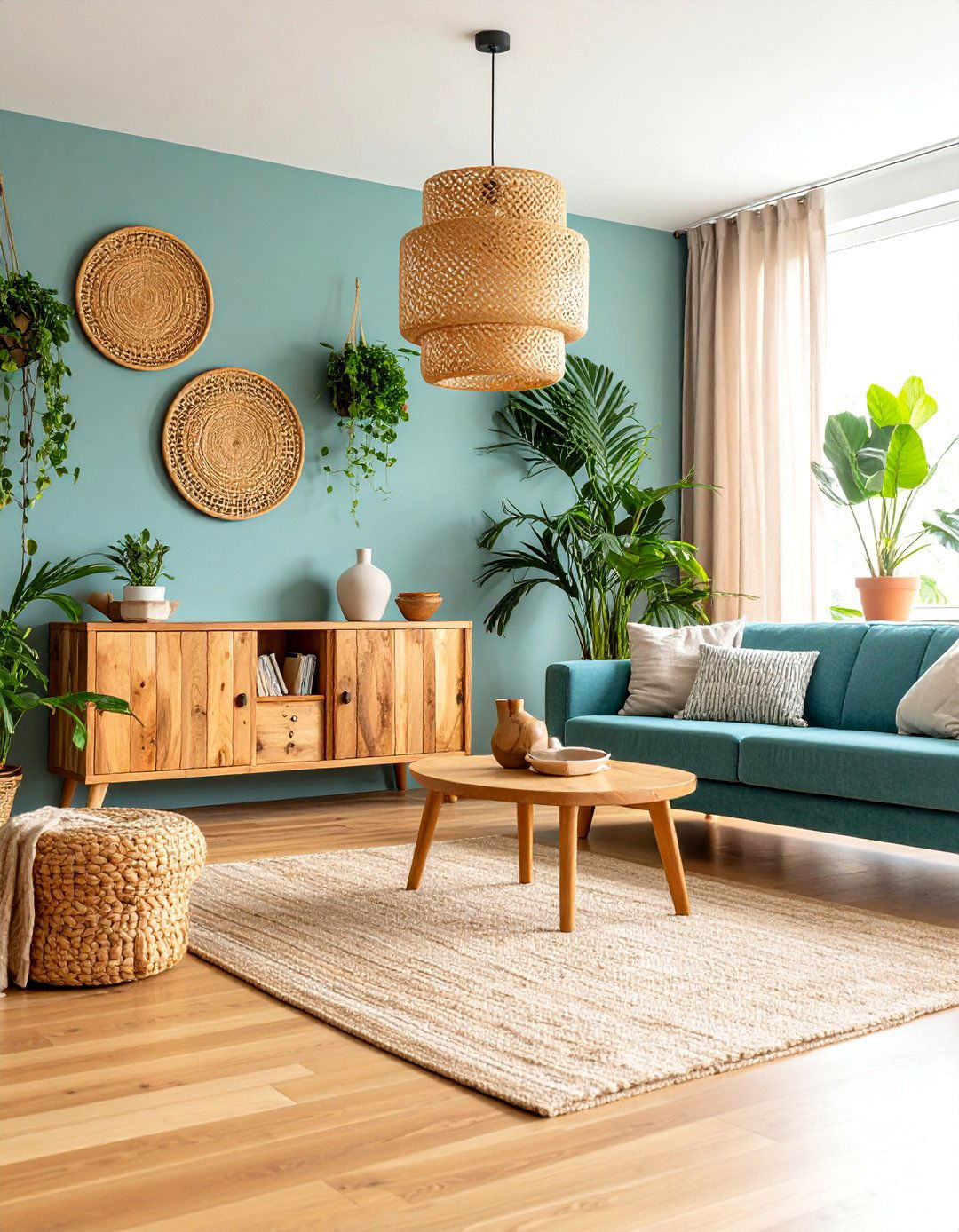
Prioritize environmental responsibility through furniture and decor made from reclaimed wood, recycled metals, and sustainable materials. Feature a reclaimed wood entertainment center as a focal point, paired with a sofa made from recycled materials and organic cotton upholstery. Choose bamboo or cork flooring, and add accessories made from upcycled materials. Select vintage furniture pieces that tell a story while reducing environmental impact. The color scheme emphasizes natural tones with warm earth colors that complement the organic materials. Add plants in recycled or biodegradable planters to enhance the eco-friendly theme. This approach creates a space that looks beautiful while supporting environmental consciousness and sustainable living practices.
6. Mid-Century Modern Living Room with Vintage Revival

Channel the iconic design elements of the 1950s and 1960s with updated interpretations of classic mid-century furniture styles. Feature a low-profile sectional with tapered wooden legs, paired with iconic furniture pieces like an Eames lounge chair or Noguchi coffee table. Choose rich walnut wood tones and jewel-colored upholstery in mustard yellow, olive green, or burnt orange. Add geometric patterns through area rugs, throw pillows, and wall art. Incorporate brass or copper lighting fixtures with sleek, angular designs. The overall aesthetic should feel both nostalgic and contemporary, creating a timeless living space that celebrates the clean lines and functional beauty characteristic of mid-century modern design principles.
7. Biophilic Living Room with Natural Stone Features

Integrate natural stone elements to create a strong connection with the outdoors and promote wellbeing through biophilic design principles. Feature a natural stone accent wall behind the seating area, complemented by stone or wooden coffee tables. Choose furniture in natural materials like leather, linen, and wood to reinforce the organic theme. Add multiple plants of varying sizes throughout the space, from floor-standing fiddle leaf figs to small succulents on side tables. Natural light becomes crucial, so maximize windows and add skylights where possible. The color palette draws from nature with sage greens, warm browns, and stone grays. Water features or natural textures like jute rugs complete the connection to natural environments.
8. Monochromatic Living Room with Black Accent Elements

Create sophisticated contrast using various shades of one color family with strategic black accents for drama and definition. Choose a base color like cream, gray, or beige, then layer different tones and textures within that color family. Add black elements through furniture legs, light fixtures, picture frames, and decorative accessories to create visual anchor points. A black leather accent chair or black metal coffee table becomes a focal point against lighter backgrounds. Incorporate varying textures like smooth velvet, rough linen, and glossy ceramic to add interest within the monochromatic scheme. This approach creates a cohesive, calming environment with enough contrast to maintain visual interest and prevent monotony.
9. Sensorial Living Room with Tactile Fabric Layers

Design for multiple senses by incorporating various textures, materials, and finishes that invite touch and create atmosphere. Layer different fabric textures like velvet cushions, bouclé throws, linen upholstery, and silk curtains throughout the seating area. Add tactile elements through woven wall hangings, textured rugs, and ceramic accessories with interesting surface treatments. Choose furniture with varied materials like leather, wood, and metal to create tactile diversity. Incorporate elements that appeal to other senses, such as aromatic candles, soft lighting options, and perhaps a small water feature for gentle sound. The overall design creates an immersive environment that engages visitors physically and emotionally through thoughtful material selections.
10. Art Deco Living Room with Geometric Pattern Elements

Embrace the glamour and sophistication of 1920s Art Deco style through bold geometric patterns, luxurious materials, and dramatic color combinations. Feature furniture with angular lines and geometric forms, such as a velvet sofa with sharp edges and chrome accents. Add geometric wallpaper or wall panels with metallic finishes, complemented by art featuring angular patterns and stylized motifs. Choose rich colors like deep teal, gold, black, and cream to create the classic Art Deco palette. Incorporate mirrored surfaces, brass fixtures, and furniture with lacquered finishes. Accessories should include geometric vases, angular sculptures, and lighting fixtures with stepped or zigzag patterns that echo the era's distinctive aesthetic.
11. Scandinavian Living Room with Cozy Hygge Aesthetics
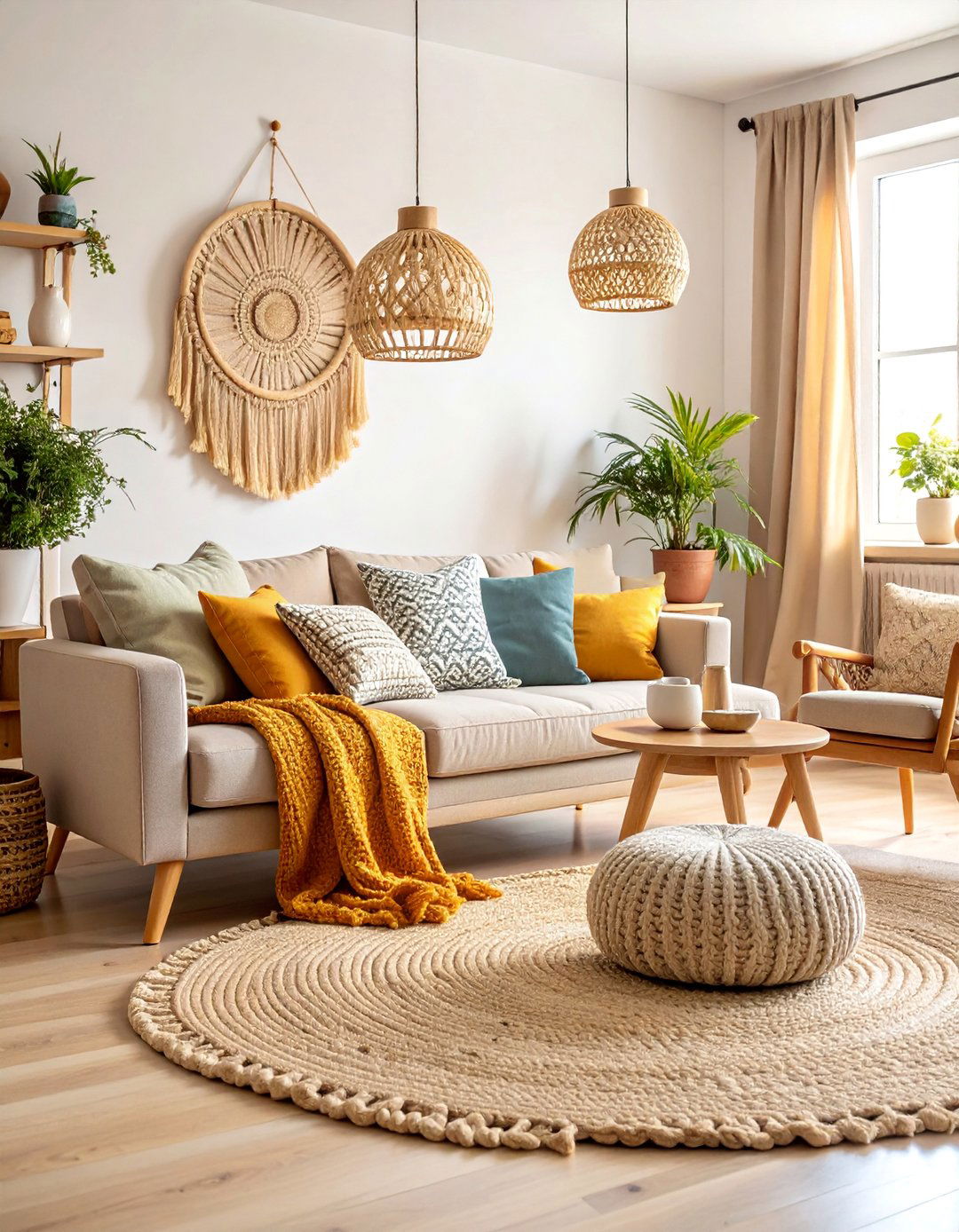
Create ultimate comfort and coziness through Scandinavian design principles that emphasize functionality, simplicity, and warmth. Feature light wood furniture in birch or pine, paired with neutral-colored upholstery in natural fabrics. Add layers of soft textiles including knit throws, sheepskin rugs, and linen cushions in muted colors. Choose simple, functional furniture forms with clean lines and minimal ornamentation. Incorporate candles, soft lighting, and perhaps a fireplace to create the warm ambiance essential to hygge philosophy. The color palette remains predominantly white and light gray with touches of soft pastels. Natural elements like wooden bowls, ceramic vases, and fresh flowers complete the serene, welcoming atmosphere characteristic of Scandinavian interior design.
12. Modern Cottage Living Room with Artisanal Touches
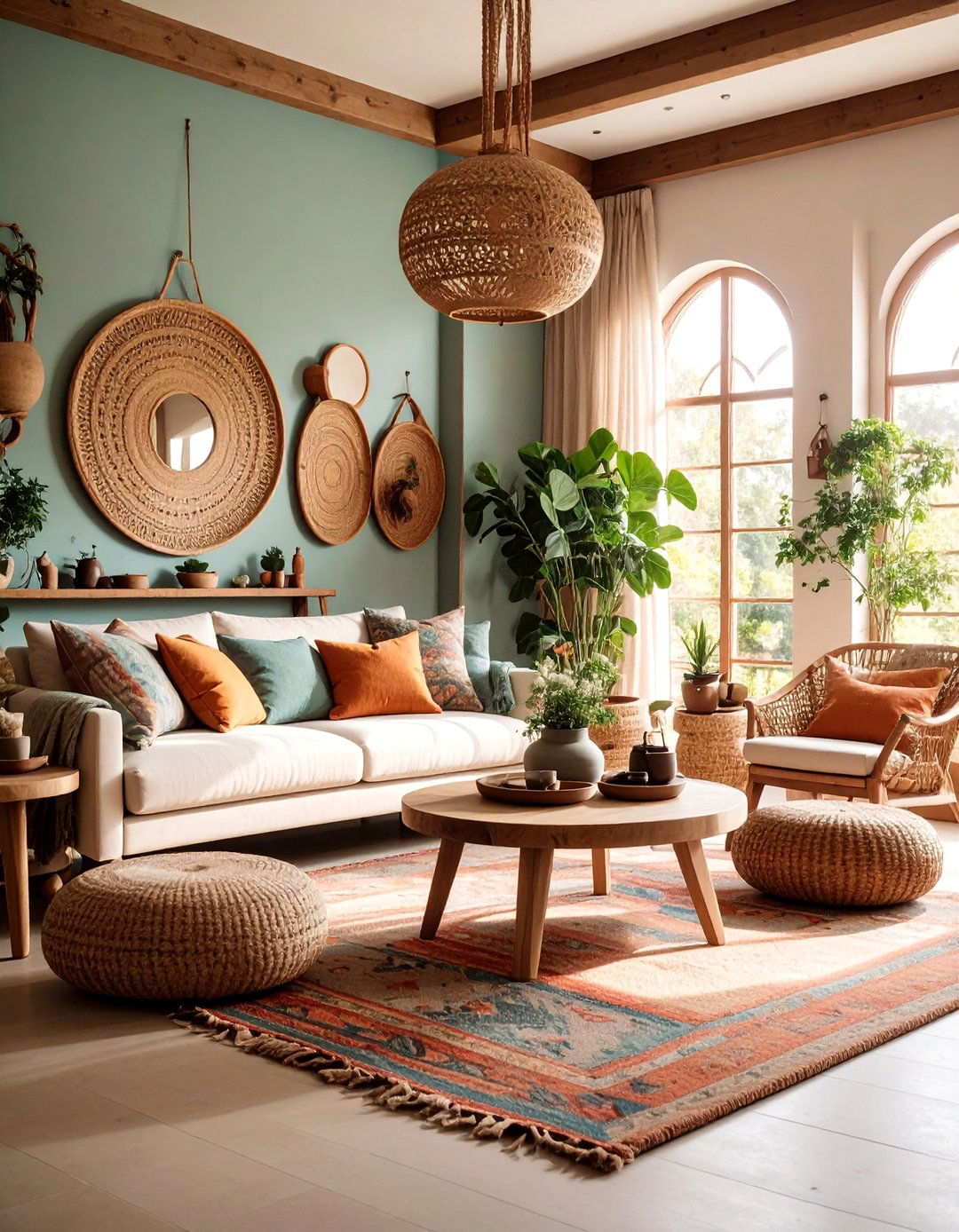
Blend rustic cottage charm with contemporary updates through handcrafted elements and artisanal details. Feature furniture that combines traditional forms with modern materials, such as a contemporary sofa paired with a handcrafted wooden coffee table. Add artisanal accessories like hand-thrown ceramic vases, woven baskets, and custom textiles. Choose a warm color palette with cream, sage green, and soft brown tones that reflect natural surroundings. Incorporate exposed wooden beams, natural stone elements, or shiplap walls for architectural interest. Local craftsmanship becomes key, with unique pieces that tell stories and add personality. Fresh flowers, vintage books, and handmade quilts complete the cozy yet sophisticated cottage atmosphere that feels both timeless and contemporary.
13. Open Concept Living Room with Modular Seating

Design flexible seating arrangements using modular furniture pieces that can be reconfigured for different occasions and needs. Choose sectional components that can be separated and rearranged, paired with moveable ottomans and accent chairs. Create distinct zones within the open space using area rugs, lighting, and furniture placement rather than walls. Add storage solutions that double as seating or surface space. The design should facilitate easy conversation and entertainment while maintaining clean sight lines throughout the open area. Choose neutral colors and consistent materials to create visual cohesion across the space. This approach maximizes functionality while maintaining the spacious feel characteristic of contemporary open-concept living environments.
14. Formal Living Room with Statement Lighting Design

Create an elegant entertaining space centered around dramatic lighting fixtures that serve as functional art pieces. Feature a large-scale chandelier or pendant light as the room's focal point, complemented by sculptural table lamps and accent lighting. Choose formal furniture arrangements with a sofa and matching chairs positioned for conversation. Add sophisticated materials like velvet upholstery, marble surfaces, and polished wood finishes. The color palette should be refined with deep blues, rich grays, or classic black and white combinations. Include elegant accessories like crystal decanters, art books, and fresh flowers. This design creates a space specifically intended for entertaining guests and special occasions, separate from casual daily living areas.
15. Earth Tone Living Room with Terracotta Color Scheme
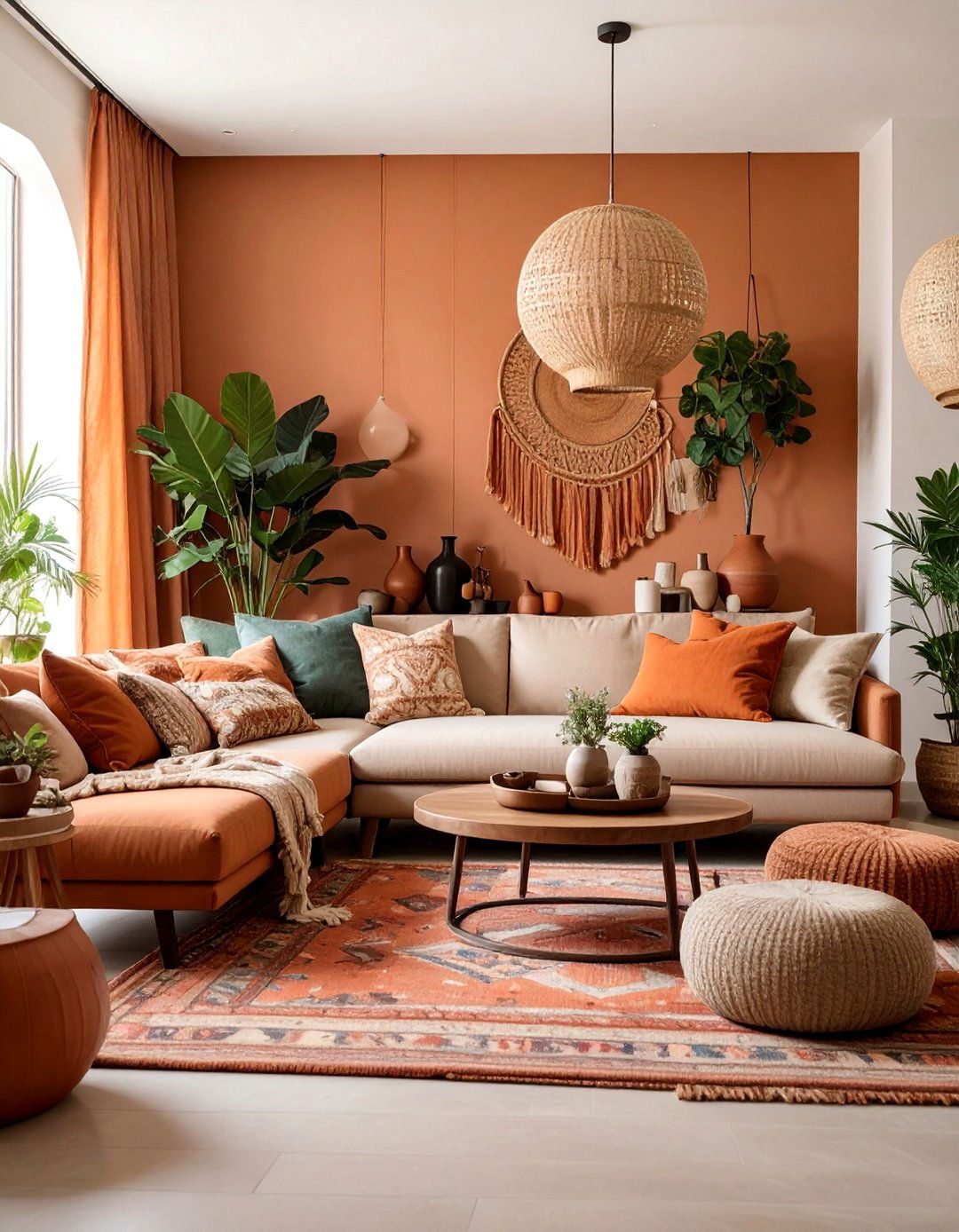
Ground the space in natural earth colors that promote calm and connection to nature. Feature terracotta as the dominant accent color through pottery, throw pillows, or an accent wall, paired with warm browns, sage greens, and cream tones. Choose natural materials like leather, linen, and wood that complement the earthy palette. Add ceramic accessories, woven baskets, and natural fiber rugs to reinforce the organic theme. Plants become essential elements, adding life and reinforcing the natural color story. The overall atmosphere should feel warm, welcoming, and restorative. Natural light enhances the earth tones, while warm artificial lighting maintains the cozy feeling in the evening. This approach creates a space that feels deeply connected to natural environments.
16. Contemporary Living Room with Floor-to-Ceiling Windows

Maximize natural light and outdoor views through expansive windows that become the room's defining architectural feature. Choose furniture with clean lines and minimal profiles that won't compete with the dramatic windows. Keep window treatments simple with sheer panels or motorized blinds that can disappear when not needed. The furniture arrangement should take advantage of views while providing comfortable seating options. Choose a neutral color palette that allows outdoor views to provide color and visual interest. Add minimal accessories and plants that complement rather than compete with natural outdoor elements. This design creates a seamless connection between indoor and outdoor spaces while flooding the interior with natural light that changes throughout the day.
17. Textured Living Room with Natural Fiber Materials
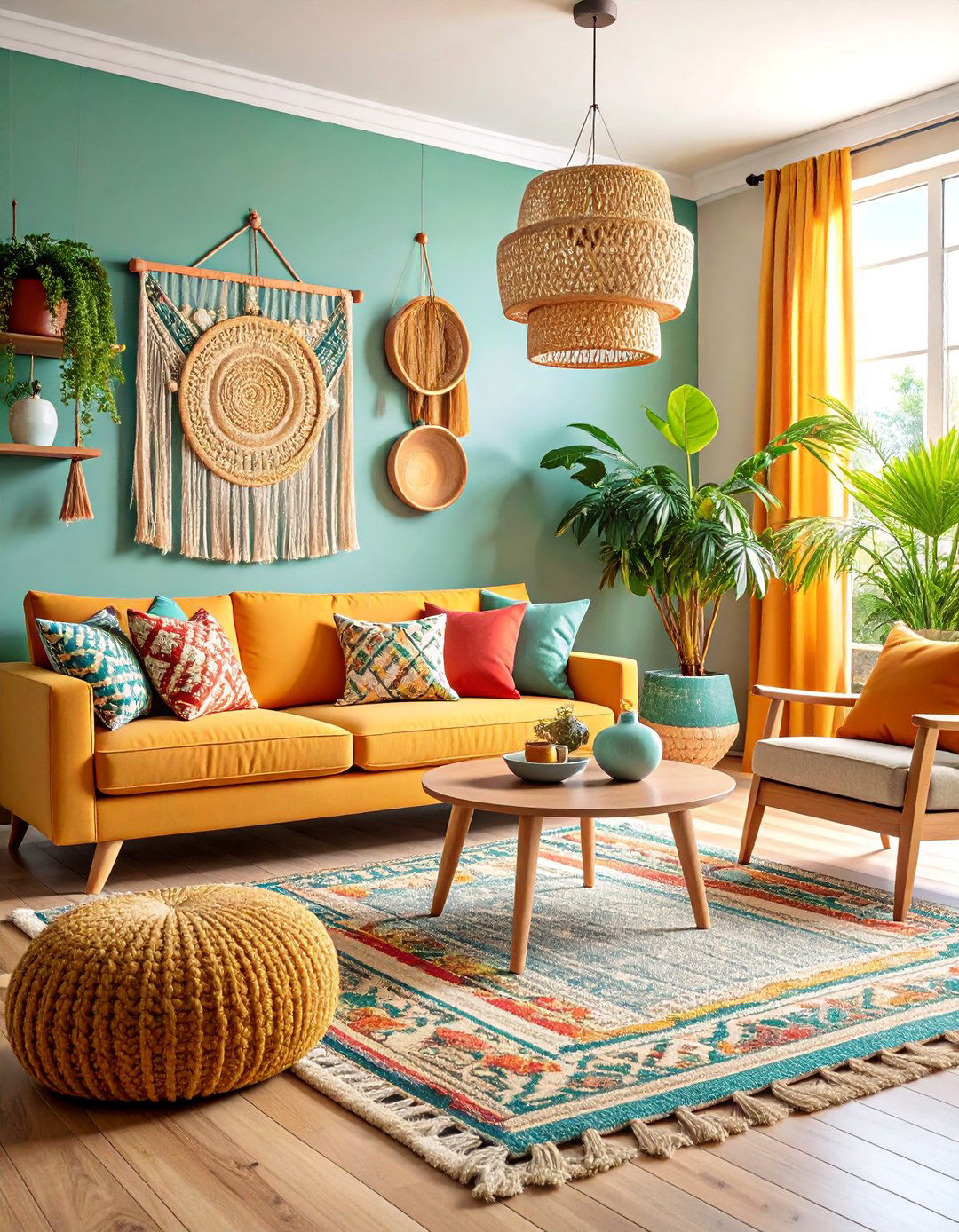
Create visual and tactile interest through varied natural fiber materials and textures throughout the space. Feature furniture upholstered in different weaves of linen, cotton, and wool, each providing unique texture and visual appeal. Add area rugs in jute, sisal, or hand-woven wool with interesting patterns or textures. Include woven wall hangings, macramé art pieces, and baskets made from natural fibers. Choose wood furniture with visible grain patterns and ceramic accessories with textured surfaces. The color palette remains neutral, allowing the various textures to create visual interest. Layer different materials at varying heights and scales to create a rich, tactile environment that invites touch and creates a cozy, organic atmosphere.
18. Eclectic Living Room with Mixed Era Furniture
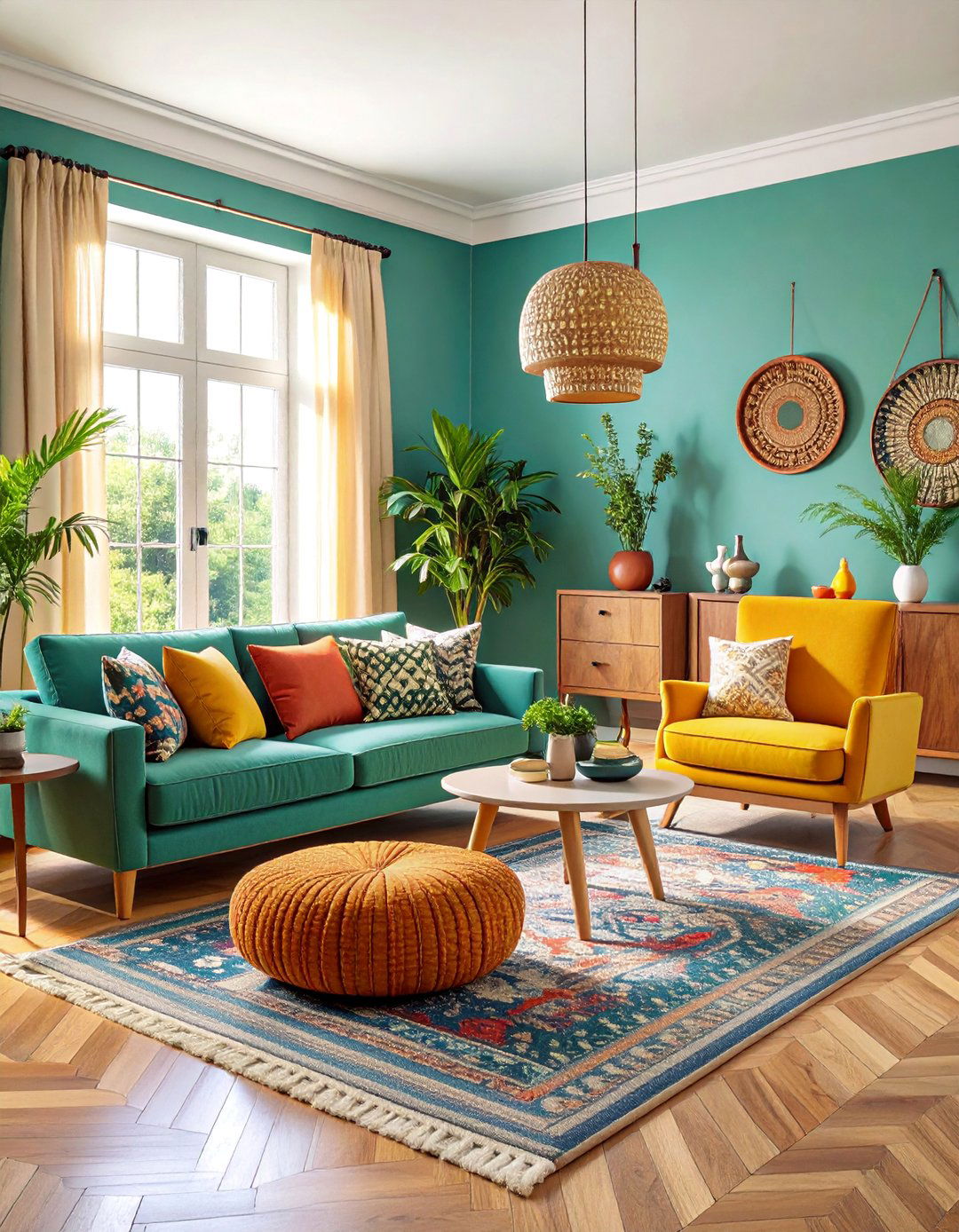
Curate furniture pieces from different historical periods to create a unique, personalized space that reflects individual taste and travels. Combine a mid-century modern sofa with Victorian accent chairs and contemporary art pieces. The key lies in finding common elements like color, scale, or material that tie disparate pieces together. Choose a unifying color palette or material theme that allows different styles to coexist harmoniously. Add vintage accessories, antique books, and collected art from various periods. The overall effect should feel curated rather than random, with each piece having a reason for inclusion. This approach creates a living space with depth, character, and stories that reflect the owner's personality and experiences.
19. Luxury Living Room with Warm Metallic Accents
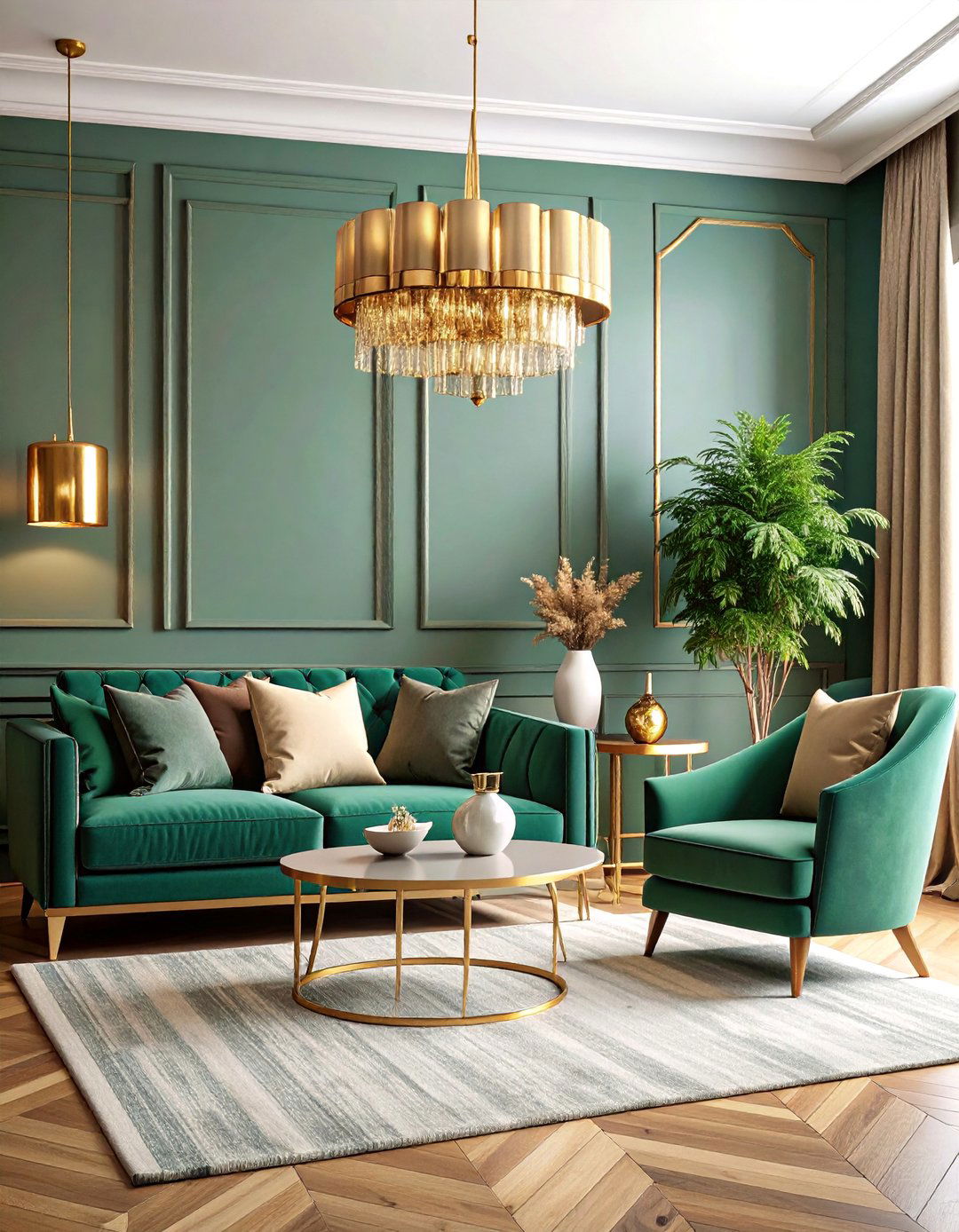
Incorporate gold, brass, and copper elements to create a sophisticated, luxurious atmosphere with warmth and glamour. Feature furniture with metallic legs or trim details, paired with rich fabrics like velvet or silk. Add metallic lighting fixtures, mirrors with gold frames, and accessories in warm metal finishes. Balance the metallics with neutral colors and natural materials to prevent the space from feeling overwhelming. Choose high-quality materials throughout, from marble surfaces to fine leather upholstery. The overall design should feel refined and elegant while maintaining comfort and livability. Strategic placement of metallic elements creates visual interest and reflects light throughout the space, enhancing the luxurious feeling without appearing ostentatious.
20. Comfort-Focused Living Room with Oversized Furniture
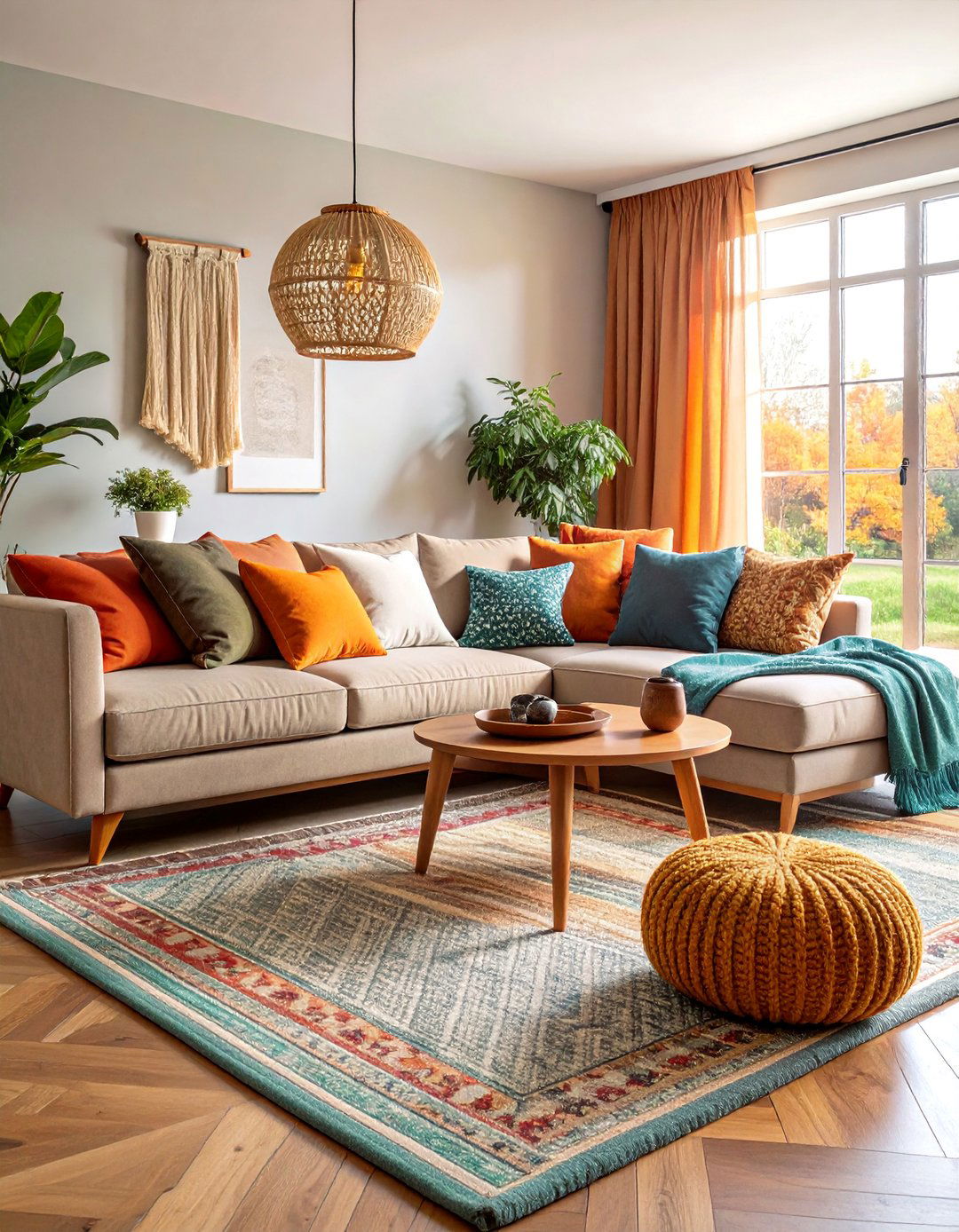
Prioritize ultimate relaxation through generous proportions and plush materials that invite lounging and unwinding. Feature an oversized sectional sofa with deep seats and soft cushions, paired with large ottomans and comfortable accent chairs. Choose fabrics that feel good to touch, like soft cotton, velvet, or high-quality microfiber. Add multiple throw pillows and blankets in coordinating colors and textures. The coffee table should be large enough to accommodate books, snacks, and personal items. Create cozy lighting with table lamps and floor lamps that provide warm, soft illumination. This design prioritizes physical comfort above all else, creating a space where relaxation comes naturally and stress melts away.
21. Color-Drenched Living Room with Bold Paint Treatments
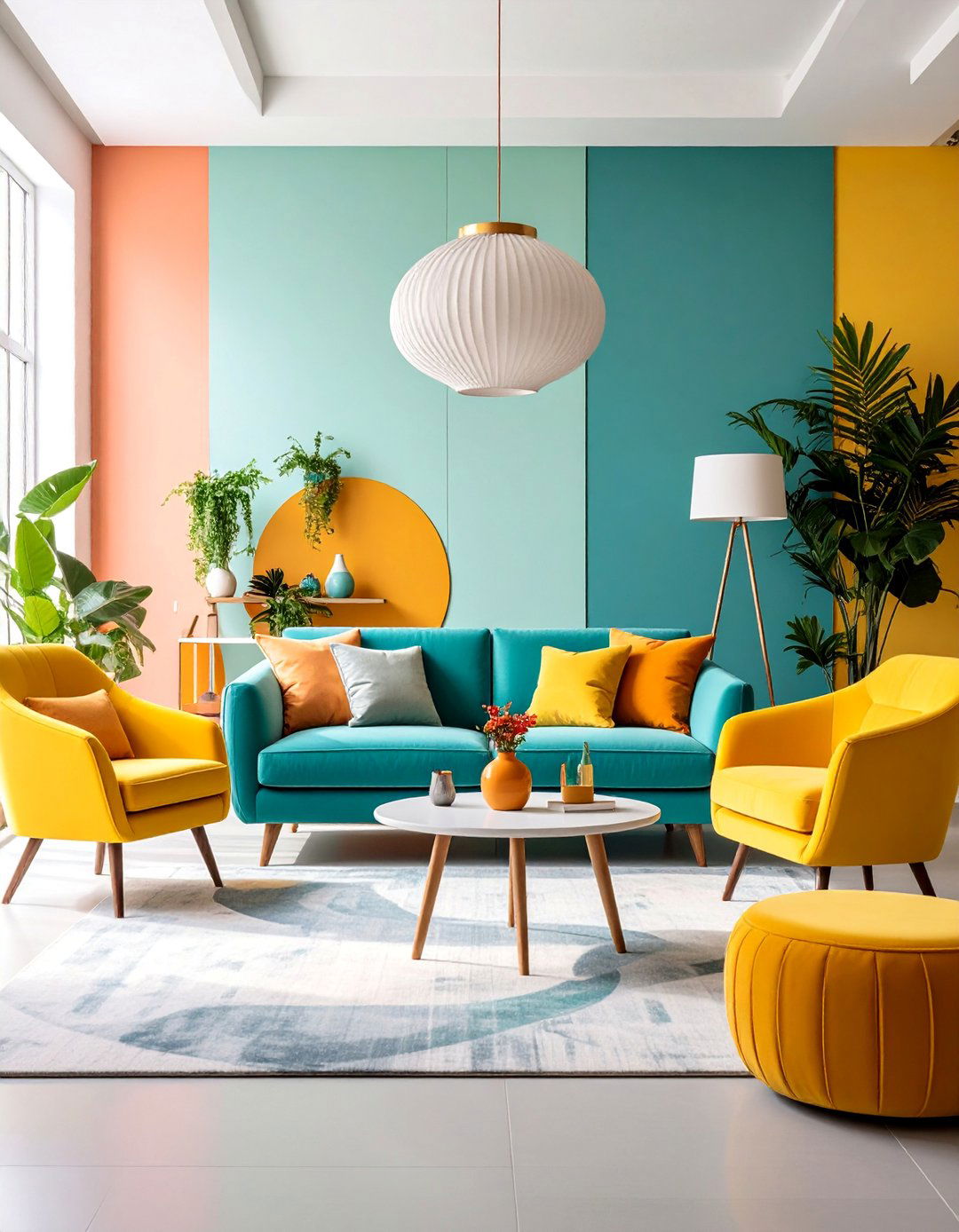
Make a dramatic statement through saturated wall colors that create immersive, envelope-like environments. Choose rich, deep colors like forest green, navy blue, or burgundy for walls, creating a cocoon-like atmosphere. Balance bold wall colors with neutral furniture or embrace the drama with coordinating colorful upholstery. Add contrasting trim colors and ceiling treatments to enhance the color story. Lighting becomes crucial in color-saturated rooms, requiring multiple sources to prevent darkness. Choose accessories and art that either complement or provide striking contrast to the wall colors. This approach creates rooms with strong personality and emotional impact, perfect for those who want their living space to make a bold statement.
22. Modern Traditional Living Room with Classic Updates
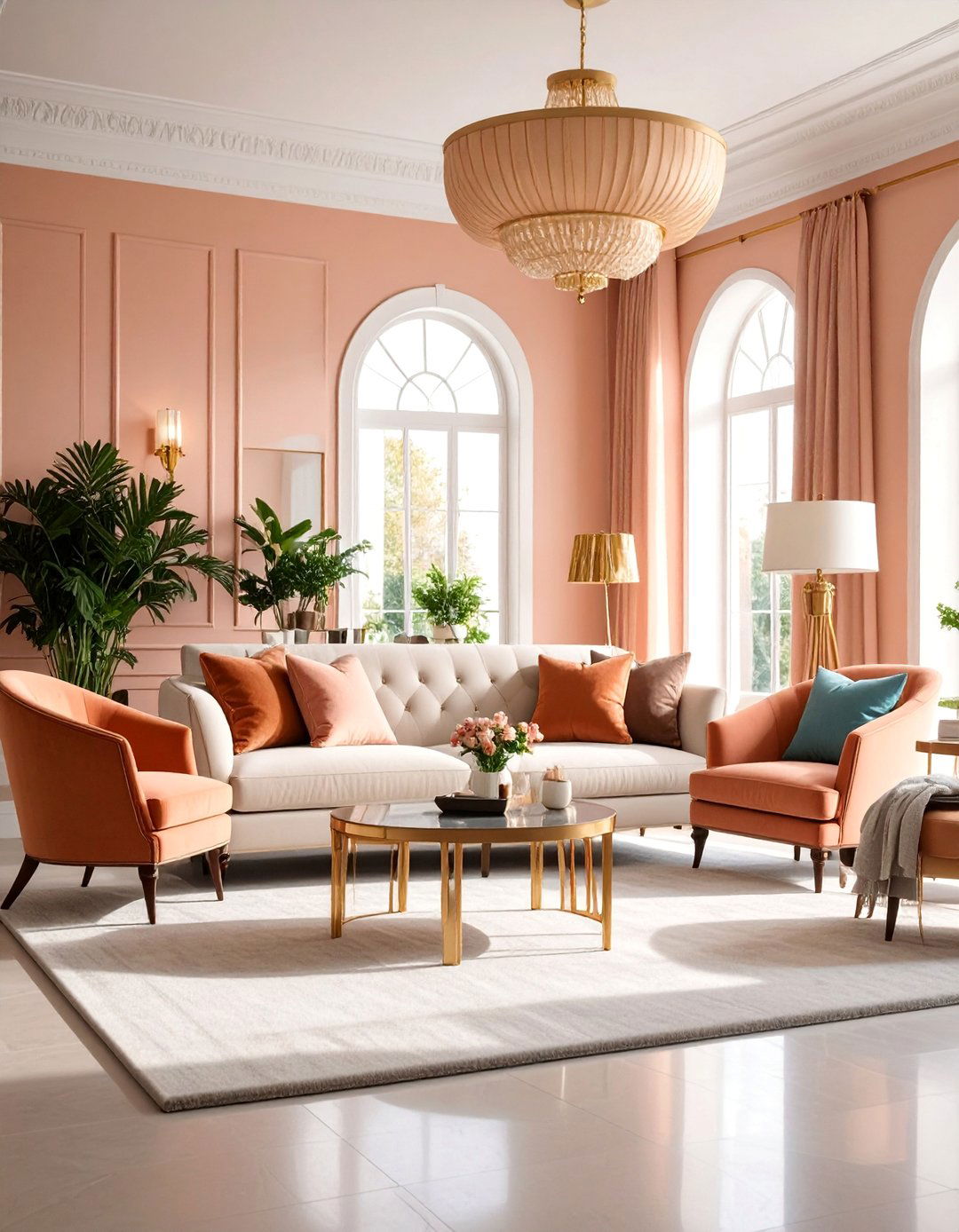
Blend timeless traditional furniture forms with contemporary materials, colors, and styling for a fresh take on classic design. Choose traditional silhouettes like Chesterfield sofas or wingback chairs, but update them with modern fabrics or unexpected colors. Combine antique wooden pieces with contemporary art and accessories. The color palette can mix classic neutrals with modern accent colors. Add traditional elements like pattern mixing and layered textiles, but keep arrangements cleaner and less cluttered than historical traditional rooms. This approach honors classic design principles while ensuring the space feels current and relevant. The result bridges past and present, creating timeless elegance with contemporary functionality.
23. Tech-Integrated Living Room with Hidden Smart Features

Seamlessly incorporate modern technology without compromising aesthetic appeal through invisible integration and multifunctional design elements. Feature furniture with built-in charging stations, hidden cable management, and wireless technology integration. Choose entertainment centers that conceal electronics when not in use. Add smart lighting systems that can be controlled remotely and adjust throughout the day. Include voice-controlled assistants integrated into the design rather than visible as separate devices. The overall appearance should remain clean and uncluttered while providing all modern conveniences. This approach allows for full technological functionality while maintaining the visual appeal of thoughtfully designed interiors.
24. Curved Sofa Living Room with Flowing Layout Design

Center the design around a dramatic curved sofa that creates natural conversation areas and visual flow throughout the space. The curved seating becomes both functional furniture and sculptural art piece, often upholstered in rich fabrics like velvet or bouclé. Complement the curved sofa with round or organic-shaped coffee tables and flowing area rugs that echo the curved lines. Add circular mirrors, curved lighting fixtures, and accessories with organic forms to reinforce the flowing theme. The furniture arrangement should feel natural and inviting, encouraging social interaction and relaxation. This design creates spaces that feel both sophisticated and welcoming, with the curved elements softening the overall atmosphere and creating visual interest.
25. Statement Wall Living Room with Architectural Elements

Create visual drama through architectural wall treatments that serve as functional art and room focal points. Feature wood slat walls, textured stone panels, or geometric wall installations that add dimension and interest. The statement wall often houses the television or serves as backdrop for seating areas. Choose materials that complement the overall design theme, from rustic reclaimed wood to sleek metal panels. Balance the dramatic wall with simpler elements throughout the rest of the space. Lighting becomes important to highlight the wall texture and create shadow play. This approach transforms ordinary walls into architectural features that define the space and create lasting visual impact.
Conclusion:
Modern living rooms in 2025 celebrate diversity in design while maintaining focus on comfort, sustainability, and personal expression. These 25 ideas demonstrate how contemporary spaces can embrace everything from minimalist serenity to maximalist boldness, always prioritizing both style and functionality. The key lies in selecting approaches that reflect individual lifestyle needs while incorporating current trends like organic shapes, natural materials, and sensorial design elements. Whether drawn to warm minimalism or dramatic color schemes, successful modern living rooms create welcoming environments that support both daily living and special occasions while showcasing personal taste and values.


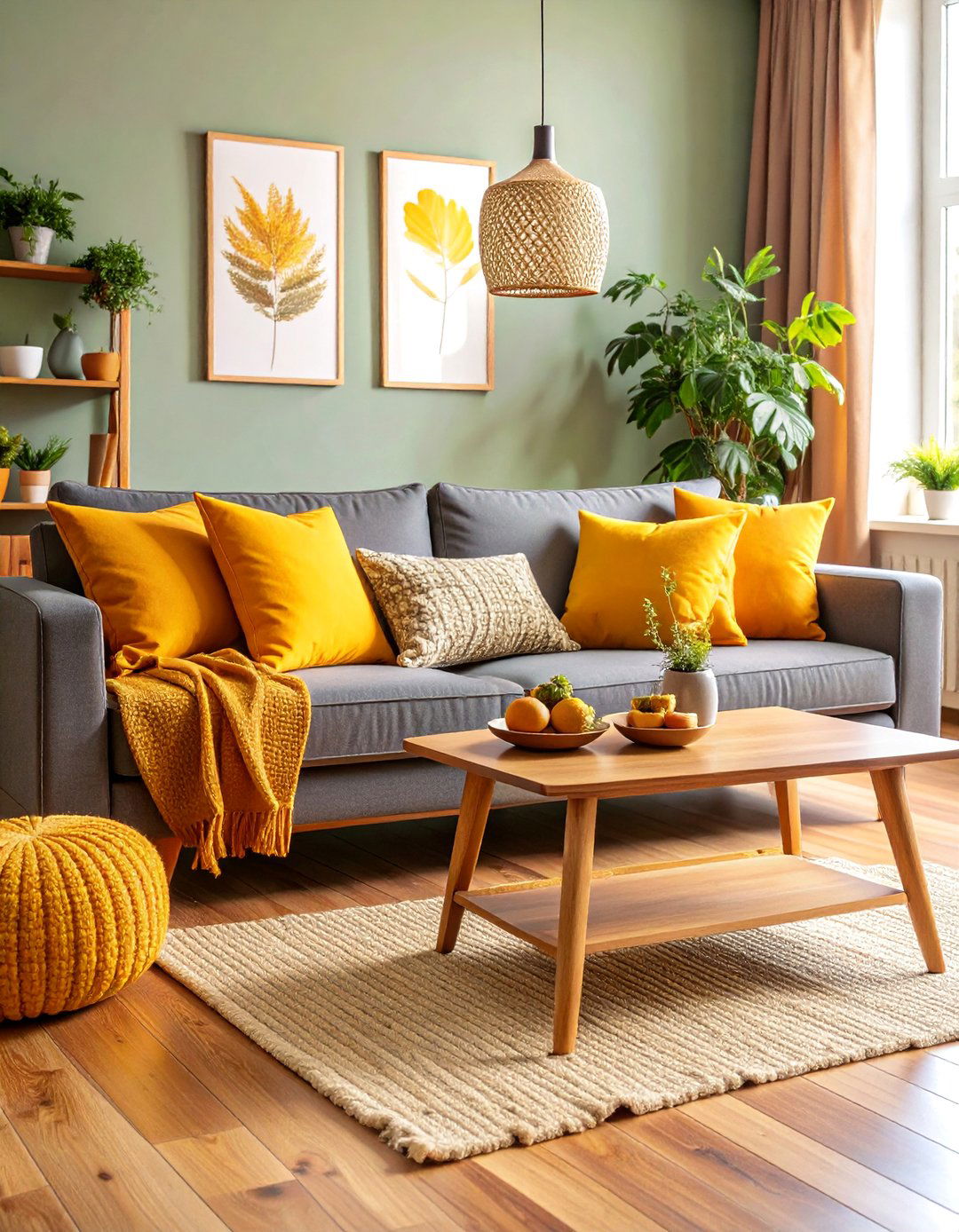
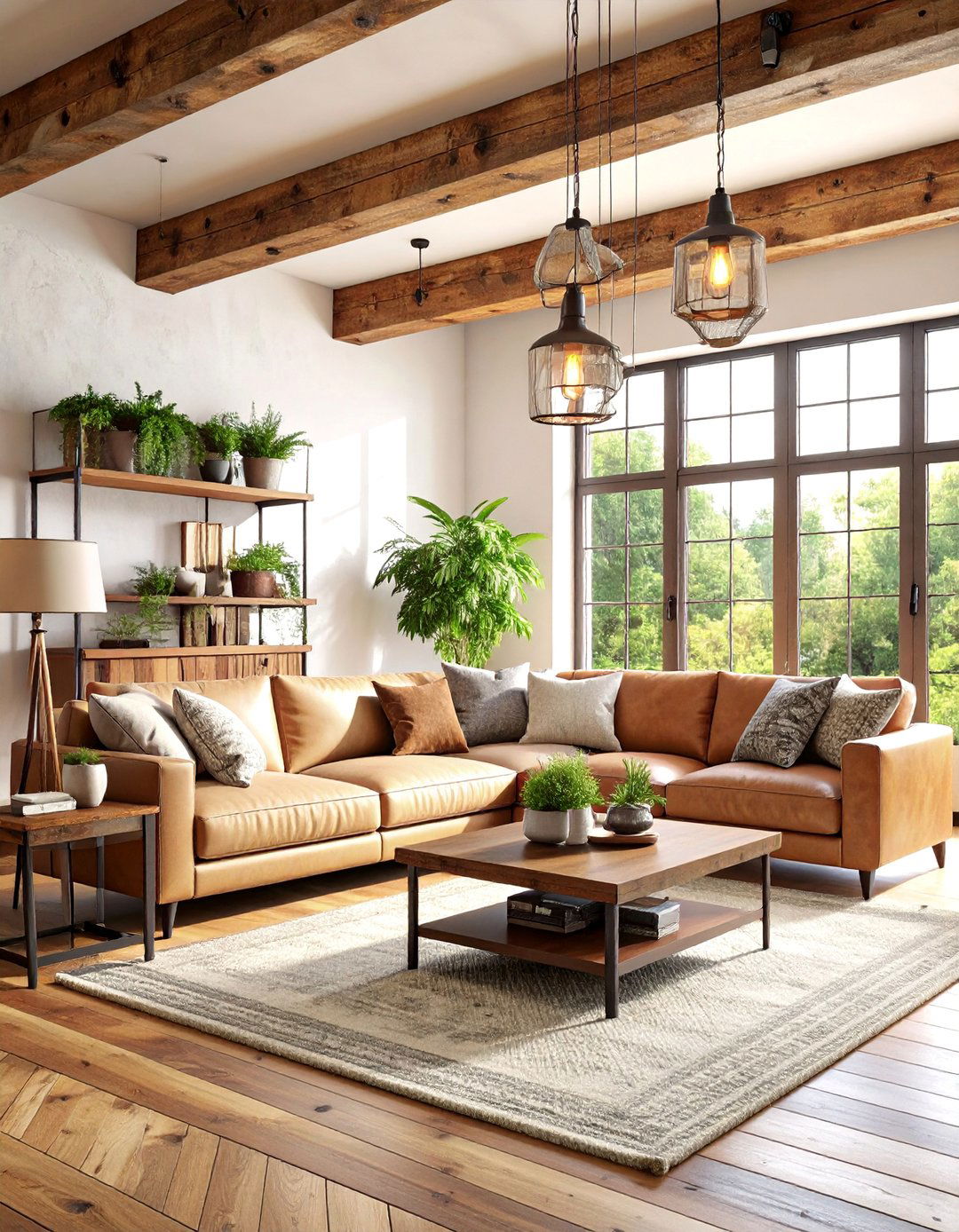
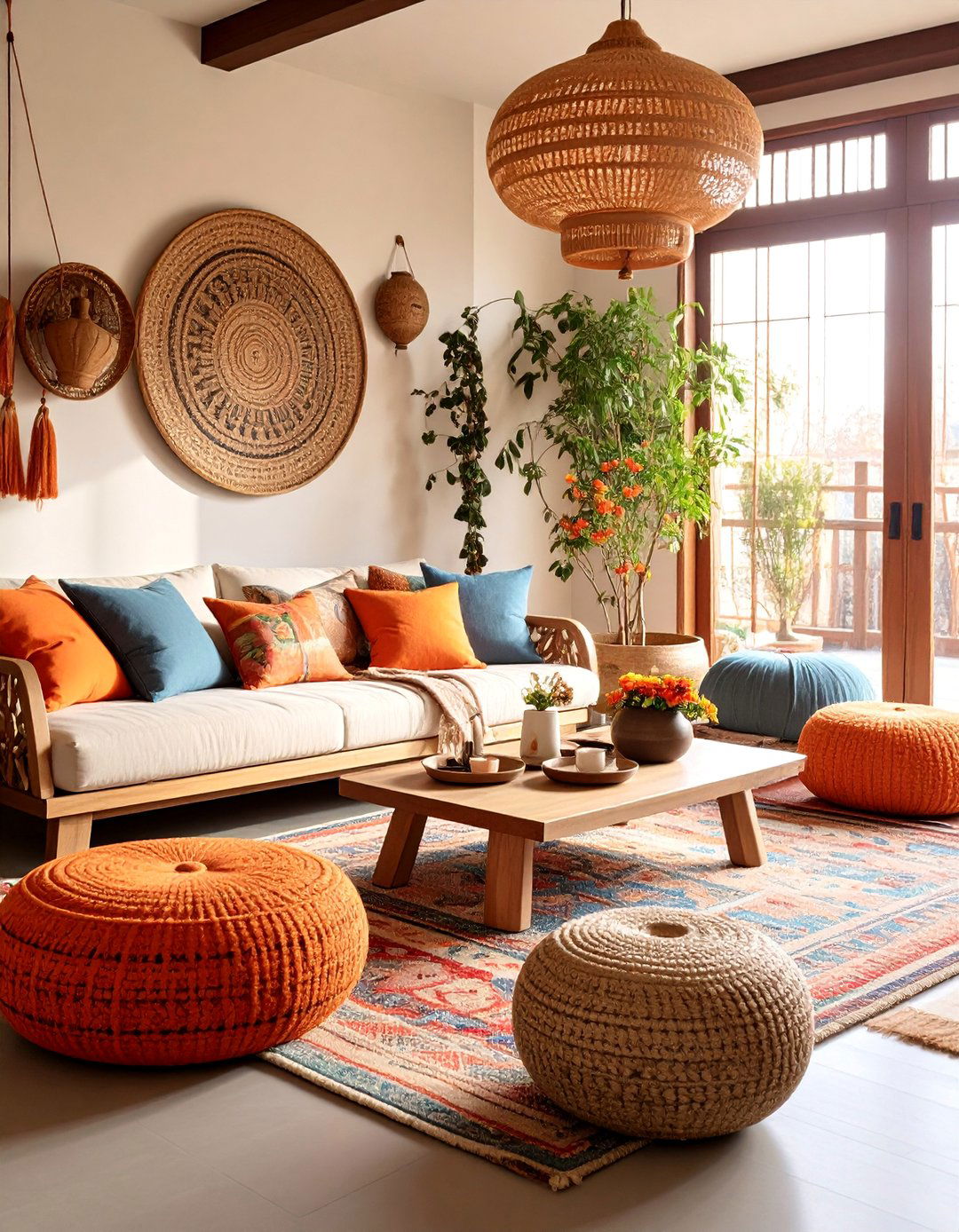

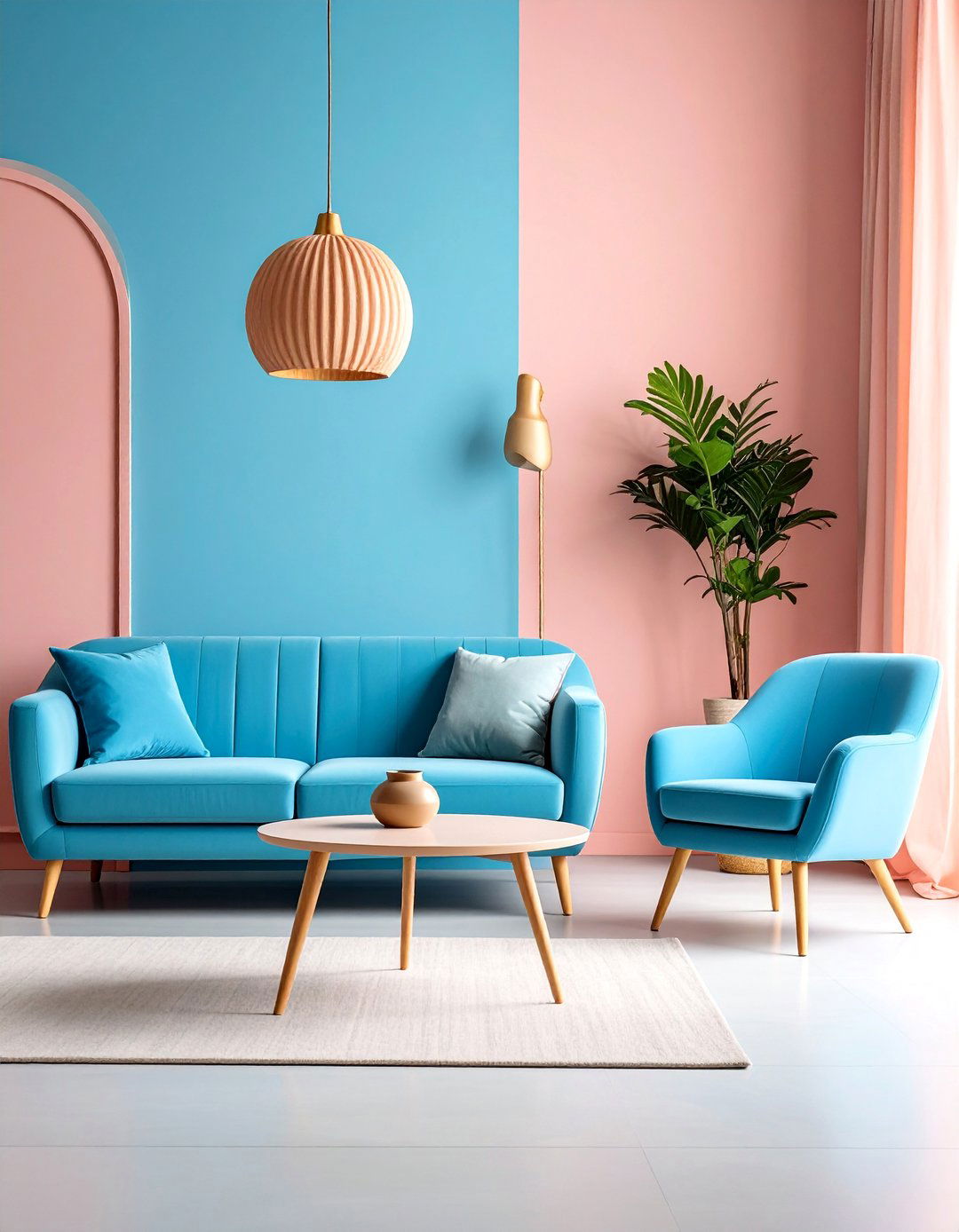
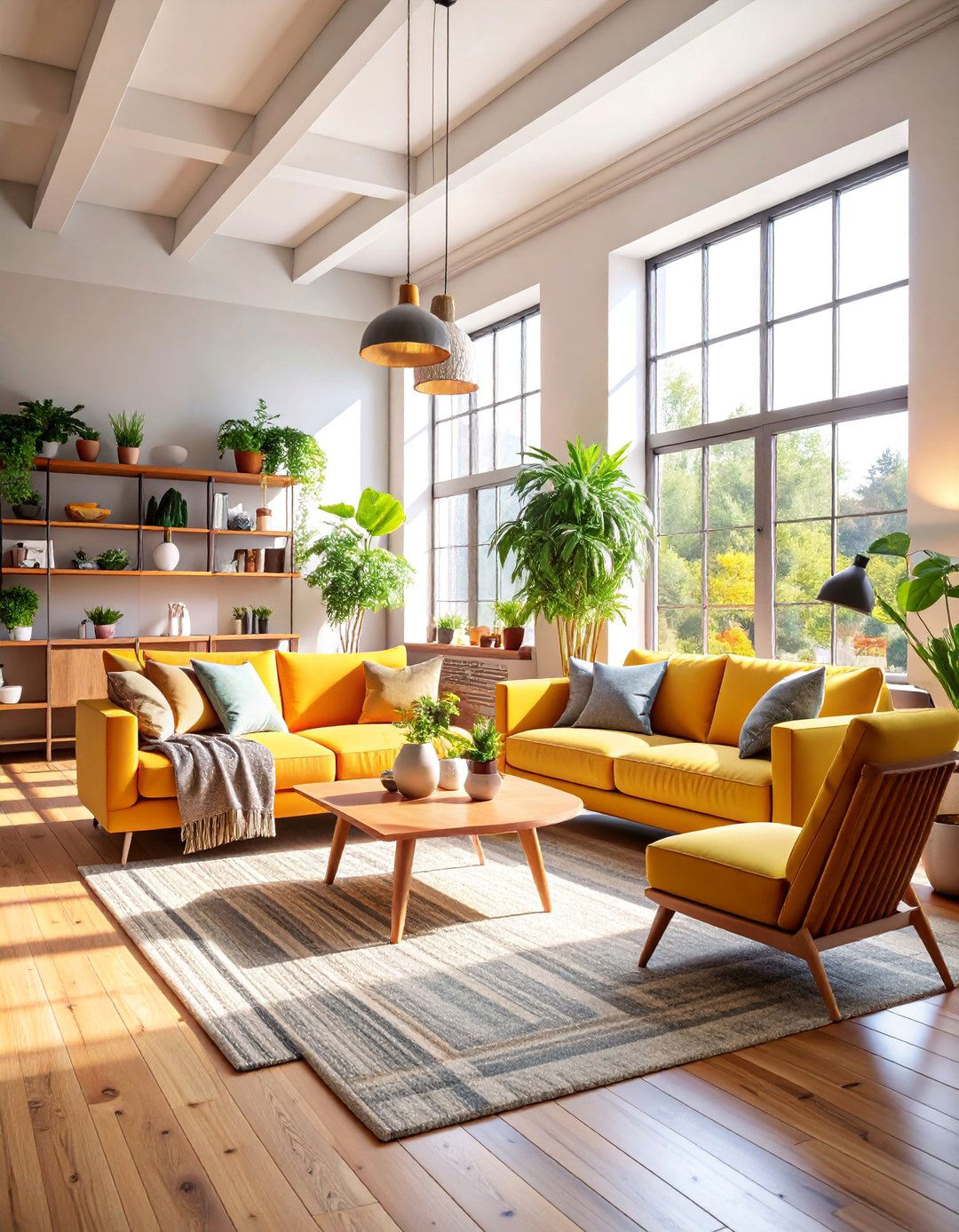
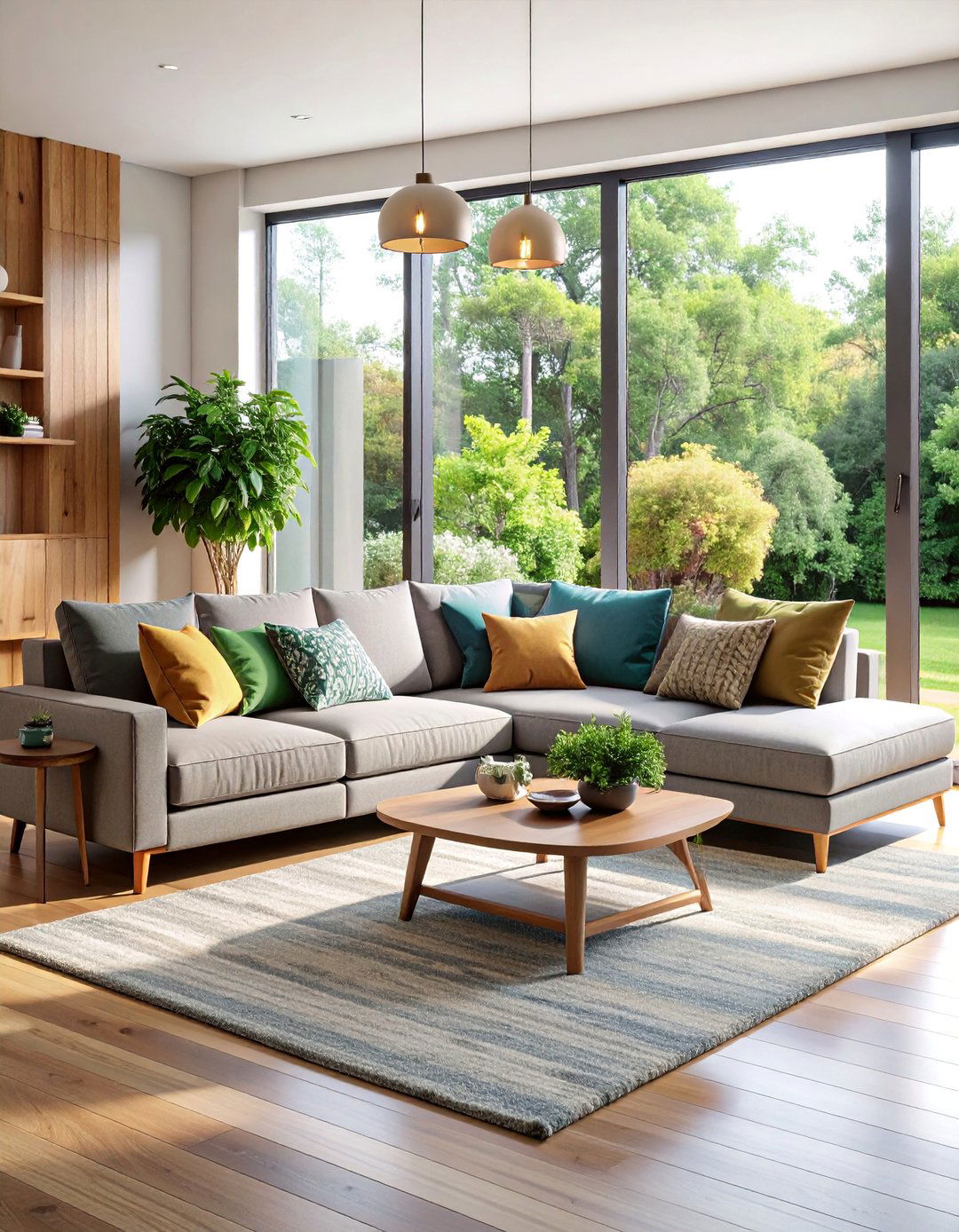
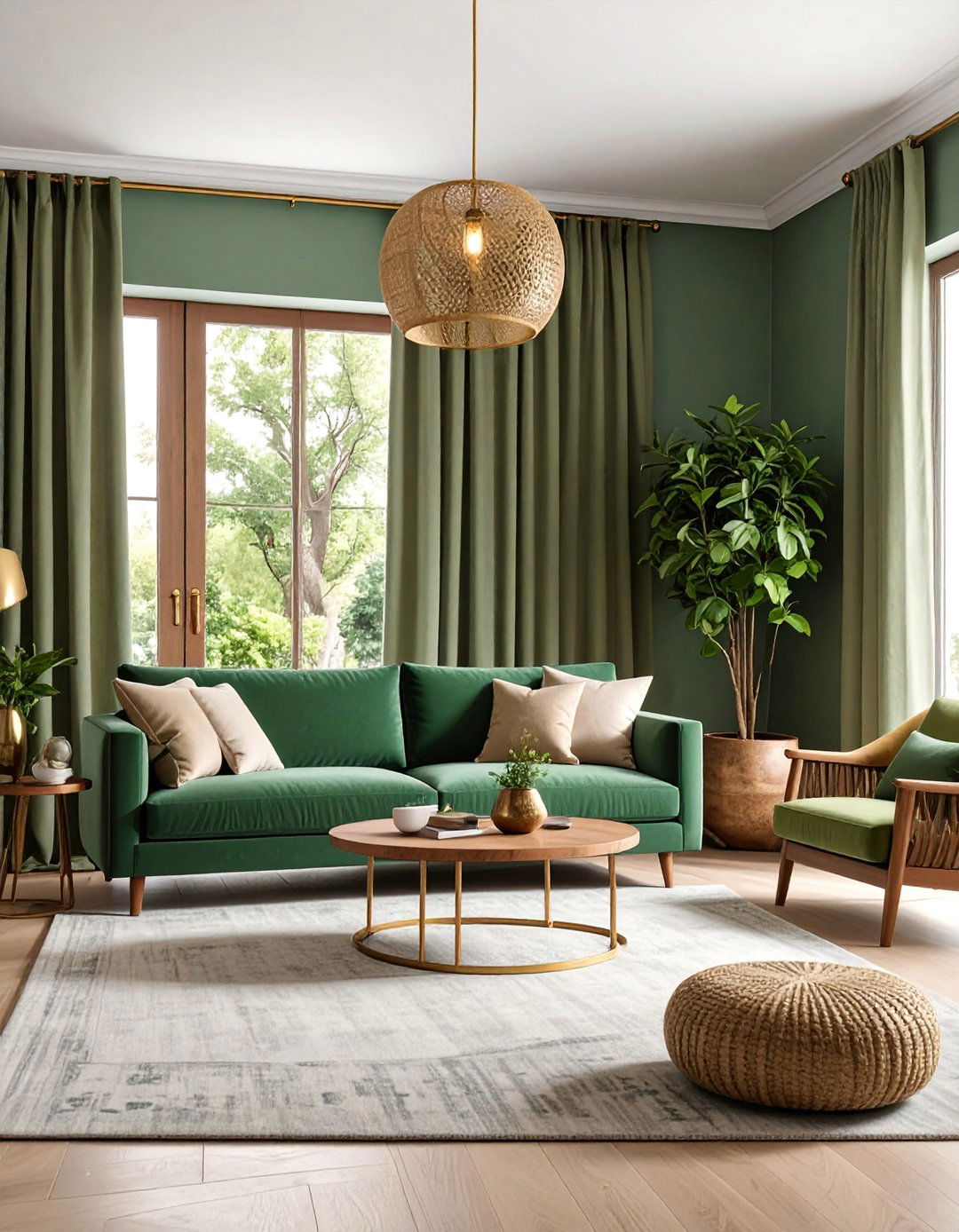

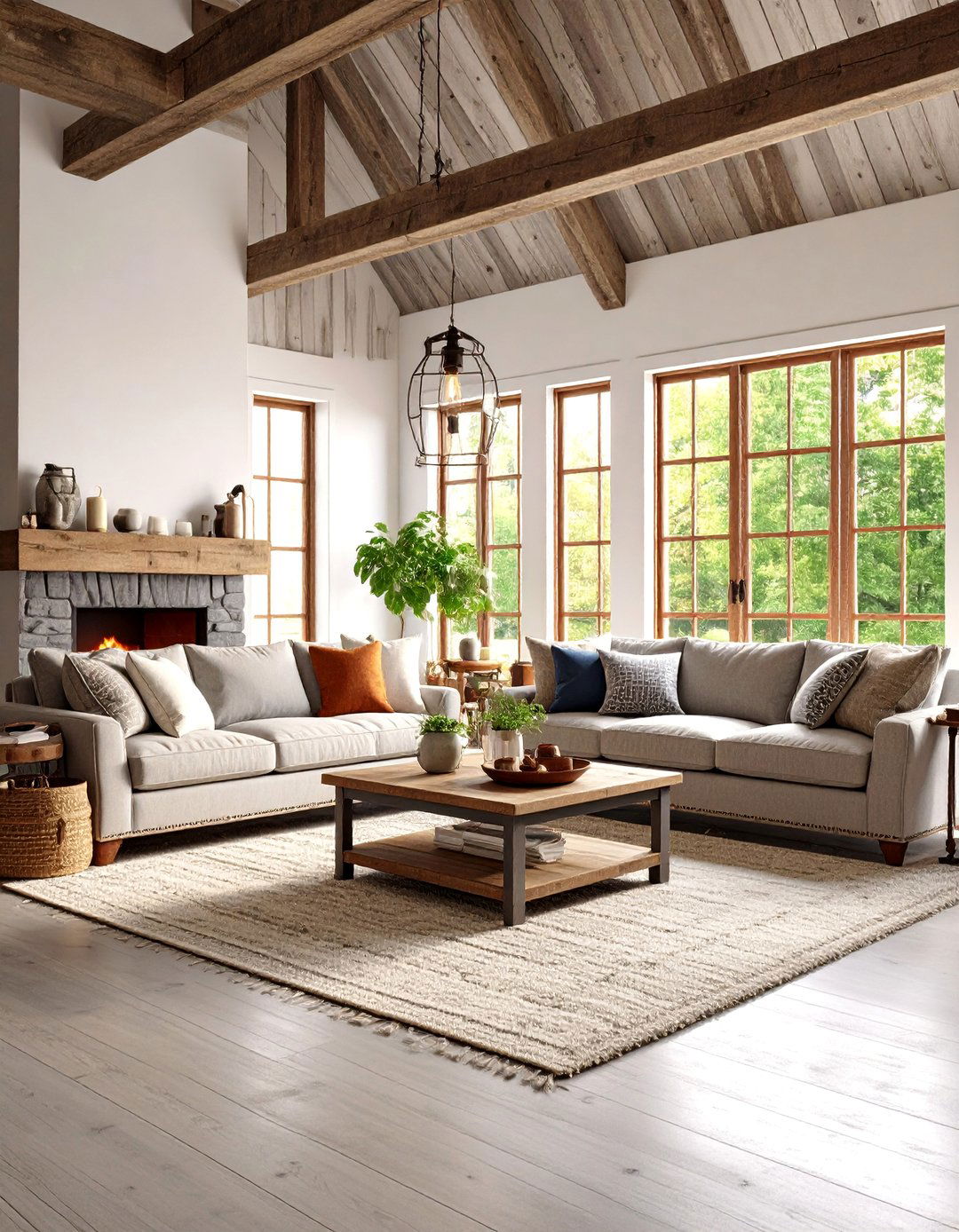
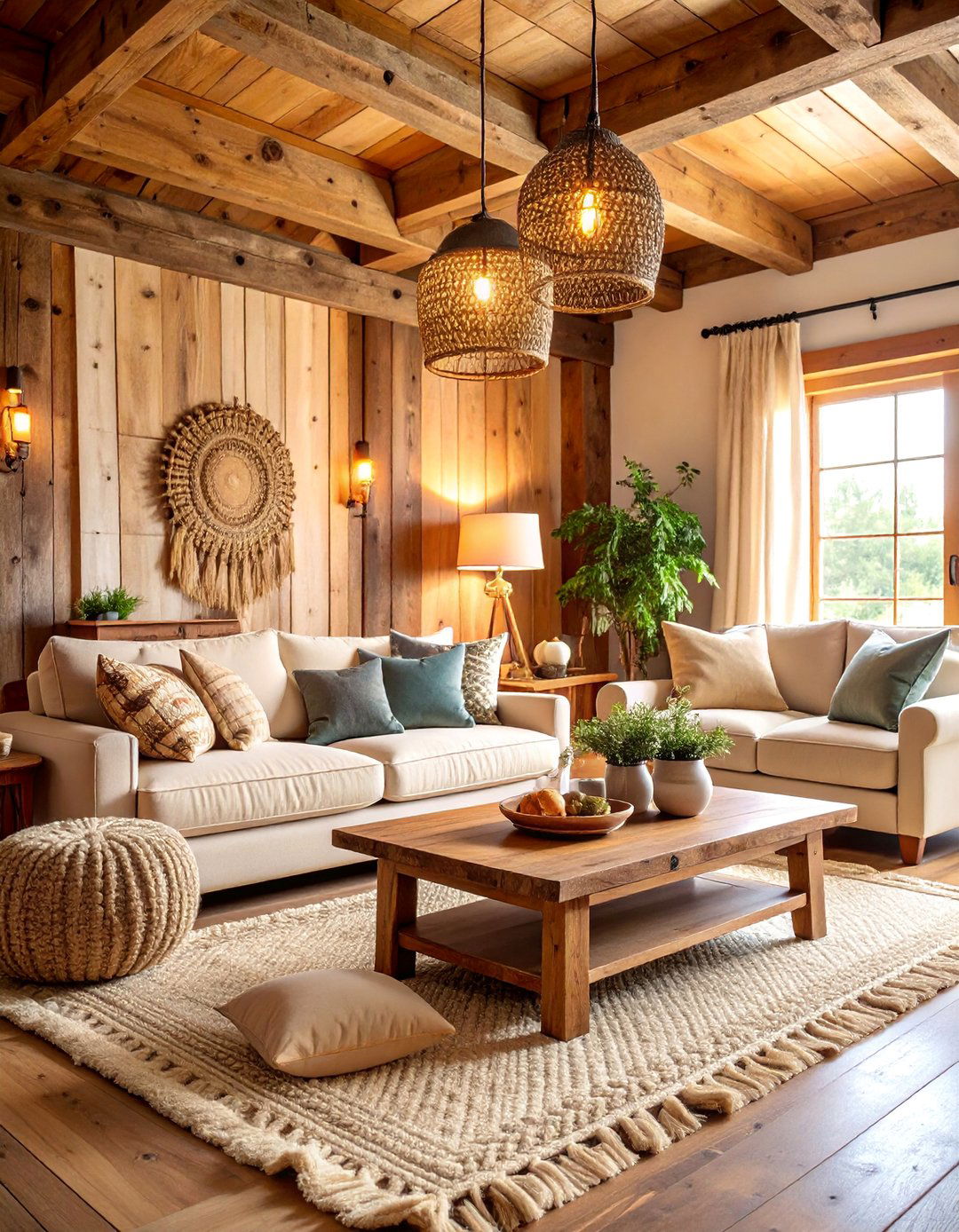
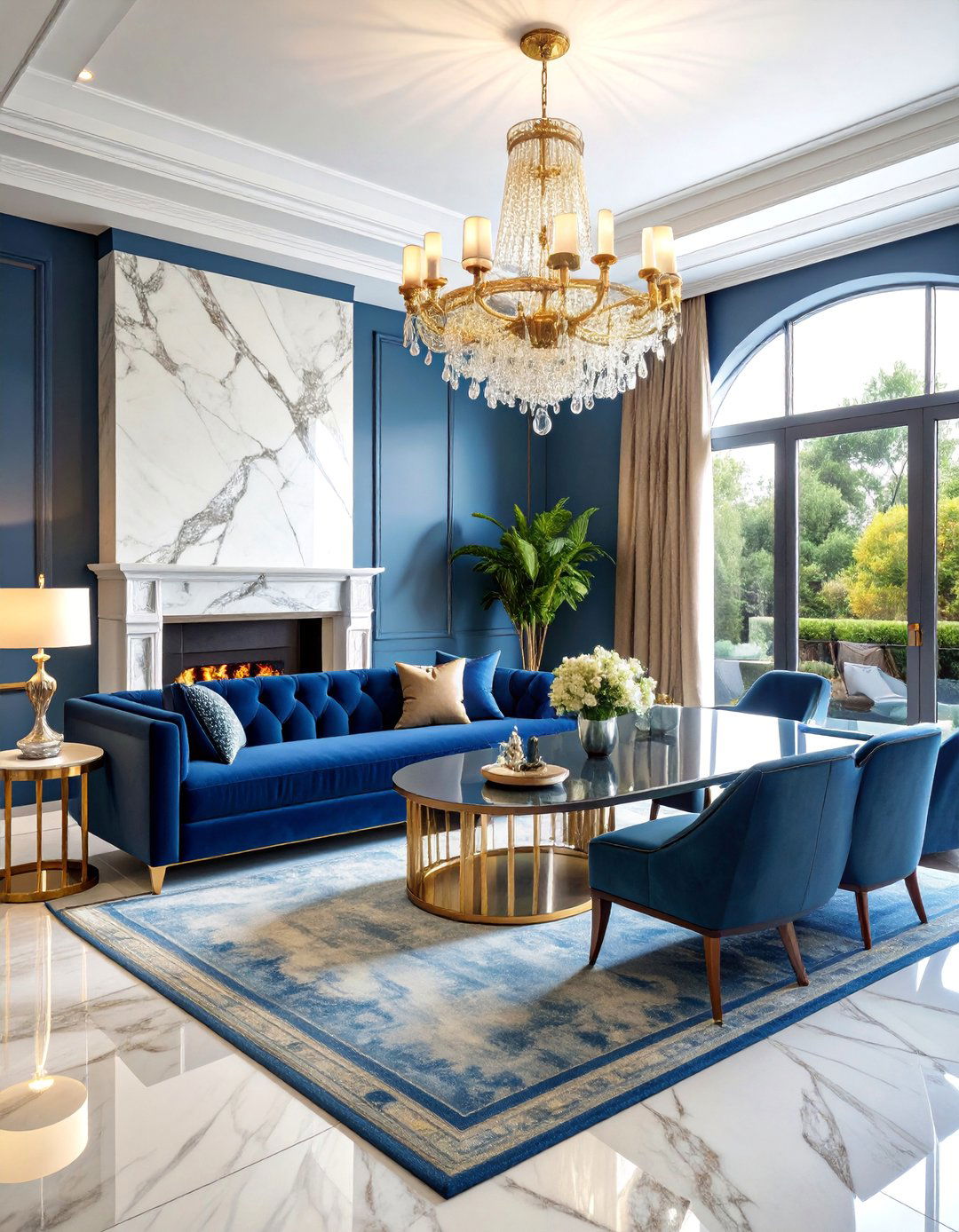
Leave a Reply